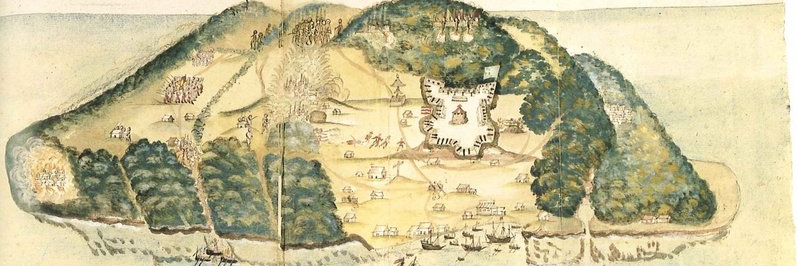Today the Arabic numerals (0, 1, 2, 3, 4, 5, 6, 7, 8, 9) are the most widely used symbols for writing numbers, adopted by most countries around the world. These numbers derive from a system originally developed in India, and later introduced to Europe by Arabs starting in the 10th century. The Arabic numerals…
Author: Stefano Cammisa
How to visit the extremely remote Pitcairn Islands
Deep in the southern Pacific Ocean, hundreds of kilometers from the nearest inhabited land, are the tiny Pitcairn Islands. This is a group of four volcanic islands called Pitcairn, Henderson, Ducie, and Oeno, which form a British Overseas Territory and have a total area of just 47 km2. Pitcairn Island is the only one that…
The tremendous scale of the 2011 Japan earthquake
On March 11, 2011, at 3:46 p.m. local time, a magnitude 9.1 earthquake occured off the northeastern coast of Honshu, the largest island of Japan. This was the most powerful earthquake ever recorded in Japan, and one of the strongest ones in the world in the past few centuries. The shock and the tsunami…
The real history of Tortuga, the pirate island
The island of Tortuga appears in several books, movies, and other pieces of modern media in which pirates are featured, often depicted as a safe place for bandits and outlaws. This island really exists, it is located off the northwestern coast of Hispaniola in the Caribbean, and forms part of the country of Haiti. But…
How dragons are depicted in different cultures
According to the traditional Chinese calendar, 2024 is the year of the dragon, which is one of the twelve animals of the Chinese zodiac. While very prominent in Chinese tradition, dragons appear in many different forms in several cultures across the world. From the serpentine creatures of East Asia to the fire-breathing flying reptiles of…
Visiting Trakai, a beautiful lakeside village in Lithuania
Just 28 kilometers west of Vilnius, the capital of Lithuania, lies the small town of Trakai. The village, which only houses around 5,000 people, is located on a narrow strip of land surrounded by lakes, the largest of which is Lake Galvė. This lake is dotted with tiny islands, including the one that houses the…
How every chemical element was discovered and named
While a few elements are known since ancient history, most have been discovered since the 17th century, and the first list of elements was compiled by French chemist Antoine Lavoisier in 1789. The development of the atomic theory, and new techniques using electricity and spectroscopy, led to the discovery of several new elements in the…
How the Vikings reached North America 500 years before Columbus
Starting in the late 8th century, a group of seafaring people from Scandinavia, now known as Vikings, expanded their influence throughout Europe, often raiding and looting the cities of the continent. From their homeland in modern-day Norway, Sweden, and Denmark, the Vikings used their characteristic longships to sail along the coasts and rivers of Europe…
The incredible ice and snow sculptures of the Harbin Ice Festival
Harbin is the capital and largest city of Heilongjiang, the northernmost province of China, part of the historical region of Manchuria. With a population of over five million people, and ten million in its metropolitan area, Harbin is one of the main centers in Northeast China. Founded in 1898 by the Russians when they were…
The ecozones of the world
There is a great amount of biological diversity on Earth, with millions of different species living in all kinds of ecosystems. This biodiversity is not distributed equally across the globe, with a larger amount of species living in the warmer areas near the tropics. The study of how species and ecosystems are distributed in the…










